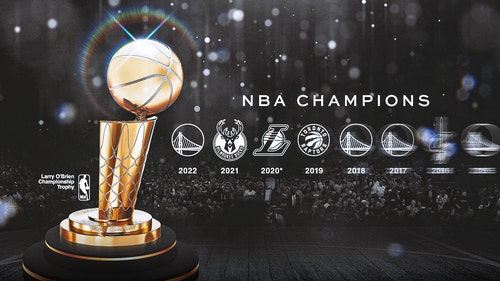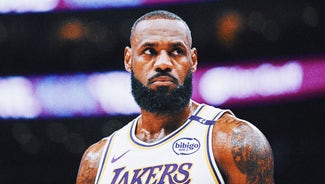
From Shaq to KAT: The evolution of the NBA big man

On an uneventful March night in 1999, Shaquille O’Neal unleashed one of the most disrespectful plays in NBA history. The Lakers were hosting the New York Knicks in a heated contest at the Great Western Forum when, with just over six minutes remaining, O’Neal received an entry pass on the block.
The 7-1 center took three dribbles to back down the Knicks’ Chris Dudley before dropping his right foot, turning, and unleashing a thunderous two-handed jam on Dudley’s head. As O’Neal finished the play, he flung his hips forward and shoved the disgraced Dudley to the ground, prompting the Knicks’ center to grab the ball and hurl it angrily at the man who had just put him on a poster.
O’Neal is arguably the most physically dominant post presence to ever set foot on an NBA court and his dunk on Dudley is the epitome of the way he imposed his will on his opponents. The 7-1, 325-pound center is the exemplar for what an NBA big man has historically been. O’Neal scored only three of his 28,596 career points from beyond the three-point arc by using his impressive touch, good footwork, and large frame to create highly efficient scoring chances. By the time he retired at age 38, O’Neal had attempted just 22 three-pointers in 19 years in the league.
* * *
Unlike Shaq, my basketball career was a short one. Save for a couple of recreation league appearances, it petered out in eighth grade when I last suited up for my middle school’s B team. The reason my career wasn’t long-lasting is simple: I wasn’t very good. You can think of me like Kobe Bryant during his farewell tour, except I didn’t jack up 20 shots per game and I have no history of ringzzz to fall back on.
As a kid who was typically taller than his classmates growing up, the entirety of my time on a basketball court was spent playing on the block where I was expected to post up similarly sized defenders and do battle with them for rebounds. Practices were spent shooting shots close to the rim, learning how to patrol the paint on defense, and working on boxing out whatever opponent was in the area.
While I certainly envied what guards and wings got to do on the perimeter with the ball in their hands, I knew my role on the court. As my teammates were trying to recreate the moves they’d seen players like Michael Jordan, Allen Iverson, and Kobe do on SportsCenter the night before, I was busy trying to perfect drop steps to get to the rim when the ball did make its way to me. For a long time, this is what it meant to be a big man playing basketball.
* * *
Nothing lasts forever, though. The traditional big man has now largely become a casualty of modern day basketball; a reflection of changing priorities amidst evolving offensive strategies and rules. In 2001, the NBA eliminated the illegal defense rule and allowed teams to begin playing zone defenses that effectively made playing through the post a much riskier proposition. “[T]hat turned every post entry pass into an exercise of needle-threading. Defenses could stick one guy in front of a post-up brute, one guy behind him to snuff out the lob pass and a third defender nearby just in case that brute spun into some unexpected position,” ESPN’s Zach Lowe wrote in a 2015 column examining the value of playing smaller lineups. The rule changes encouraged taller players to begin playing further away from the basket where they had more space to operate by facing up their defenders and attacking off the dribble.
This evolution in the game of basketball is similar to what Yago Colás calls invention in his book Ball Don’t Lie: Myth, Genealogy, and Invention in the Cultures of Basketball. Invention can be defined as repurposing things that already exist in order to form something new. For example, Colás explains that dribbling was not originally part of the game, but rather was invented during play when a player was trapped in the corner and responded by rolling the ball along the floor and chasing it. Dribbling, then, was integrated into the game as a way to persuade those playing it to continue to do so. It was a way to make the game more enjoyable for those involved.
Now, basketball involves more than just the players playing the game. As a spectator sport, basketball must remain attractive to the viewer in order to continue to prosper on such a massive scale. Much like the addition of dribbling, the elimination of the illegal defense rule was an attempt to make the game more enjoyable by creating a more free-flowing offensive style that significantly reduced the amount of plodding post play which had characterized basketball for many years.
A simple look at how many three-pointers per game centers are taking is one way to measure how basketball has evolved under these new rules. After the league added the three-point line in the 1979-80 season, it took nearly 20 years for a center to attempt more than one three-pointer per game (min. 50 games played) with four players accomplishing the feat in the 1996-97 season, according to Basketball Reference. Just over 15 years after the elimination of the illegal defense rule in 2001, that number rose to 12 players last season.
* * *
While rule changes can be a catalyst for evolution, nothing in basketball can really change until the players begin to make adjustments. Although he never reached the (admittedly somewhat arbitrary) one three-pointer per game mark during his career, Kevin Garnett is an exemplar — along with players like Dirk Nowitzki, Tim Duncan, and Rasheed Wallace — of the pivot point between the traditional big men of yesteryear and the more free-flowing bigs that characterize the modern day.
“By the time Garnett reached his peak in the 2003–04 season, the NBA was changing underneath his feet,” The Ringer’s Jonathan Tjarks noted earlier this year. Power forwards were becoming centers, offenses were spreading the floor with shooters, and the pick-and-roll was developing into the weapon of choice for many of the league’s head coaches. In a slightly different era, Garnett could have been a 7-foot tall Draymond Green, capable of stretching opposing defenses with his mid-range game on offense while being sufficiently quick and long enough to wreak havoc on the other end of the floor as the centerpiece of a switching-style defense. Garnett may have been before his time, but a cadre of young big men are ready to carry the torch.
* * *
Of the 12 centers to average more than one three-pointer per game last season, four of them were rookies and seven are 25-years old or younger. Even the league’s most physically dominant center, DeMarcus Cousins, hoisted 210 triples for the lowly Kings. Most importantly, though, the league’s three most promising rookie centers — Karl-Anthony Towns, Kristaps Porzingis, and Nikola Jokic — all crossed the threshold.
Number of three-pointers made isn’t the only measurement of the modern NBA big, of course. These 7-0 behemoths must also be able to dribble, pass, and defend. Centers are now being tasked with switching onto point guards defensively; asked to keep up with the game’s quickest and shiftiest players along the perimeter for stretches of the shot clock — a task so gargantuan that even a man-mountain like Shaq would have struggled with it.
The evolution of the big man isn’t coming to an end anytime soon. While Towns, Porzingis, and Jokic have already flashed potential at the next level, there is also a pipeline of talented youngsters waiting in the wings. Harry Giles, a 6-11 power forward headed to Duke, is a fluid athlete with the potential to be a versatile defender while DeAndre Ayton, a smooth passer with a developing jump shot, is one of the most sought after prospects in the 2017 high school recruiting class.
* * *
Maybe the end of my personal basketball career wasn’t just about not being very good. Eighth grade is around the time that other kids started hitting growth spurts and flashing their natural athleticism. That combination made it possible for wing players to do battle on the glass and made them more of a nuisance when it came to getting shots away in the post. Sound familiar?
The last five or so years have ushered in an era of small ball in the NBA with teams using shorter and shorter lineups, designed to exploit the lack of mobility of big men on defense, while not sacrificing too much when they guard the brute on the other end. Golden State’s Draymond Green has become the revolution’s poster boy, a 6-7 brickhouse with enough strength to hold off the league’s largest players and a physical playing style that allows him to challenge shots and attack the boards.
The question is what happens when a new wave of big men with all of the skills of a guard, but the size of a traditional powerhouse makes its way into the league. If two players have similar skillsets, then bigger is almost always better. A new generation of bigs are coming. Versatile frontcourt players like Towns, Porzingis, and Jokic are already reinventing the way that NBA teams, analysts, and fans look at big men in the league and more players like them are primed to join The Association in the near future. Now, the question becomes, what evolution is next?
More from Upside and Motor
This article originally appeared on










